Onion growing problems – 8 common issues and expert tips for how to avoid them
If you wonder ‘why are my onions not growing?’ then it could be the result of one of these frequent problems
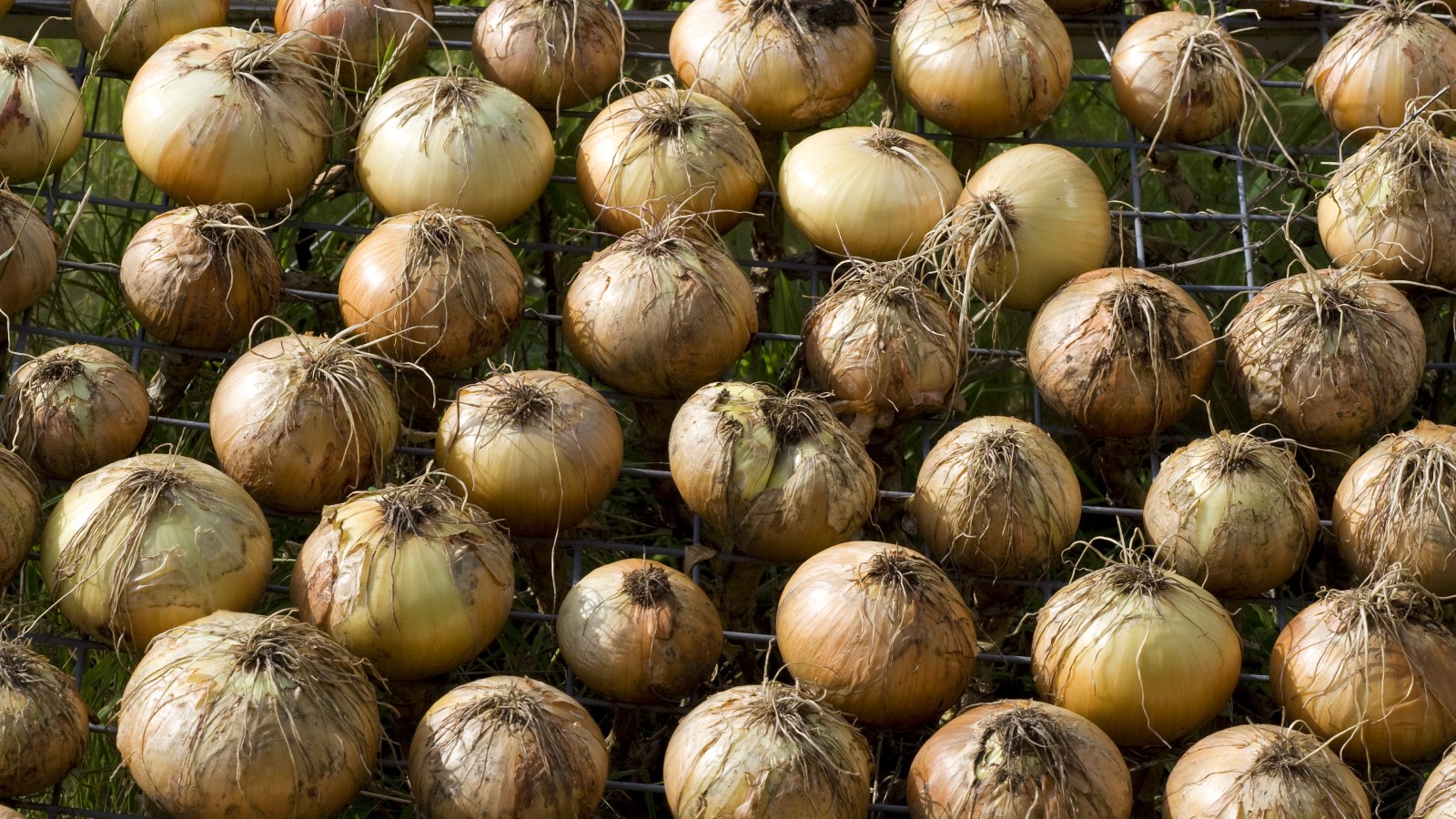

Growing onions is a hugely popular past-time for vegetable gardeners around the globe. It can be a simple task, though there are lots of pitfalls that can hit your crop and ruin a potential harvest.
These problems are often easily avoided by simple measures like picking the right varieties to grow, having a regular feeding and watering regime, and giving your plants the space they need to prosper.
If you are learning how to grow onions then these eight common onion growing problems need not be daunting as, with a few expert tips, you’ll have everything you need to succeed.
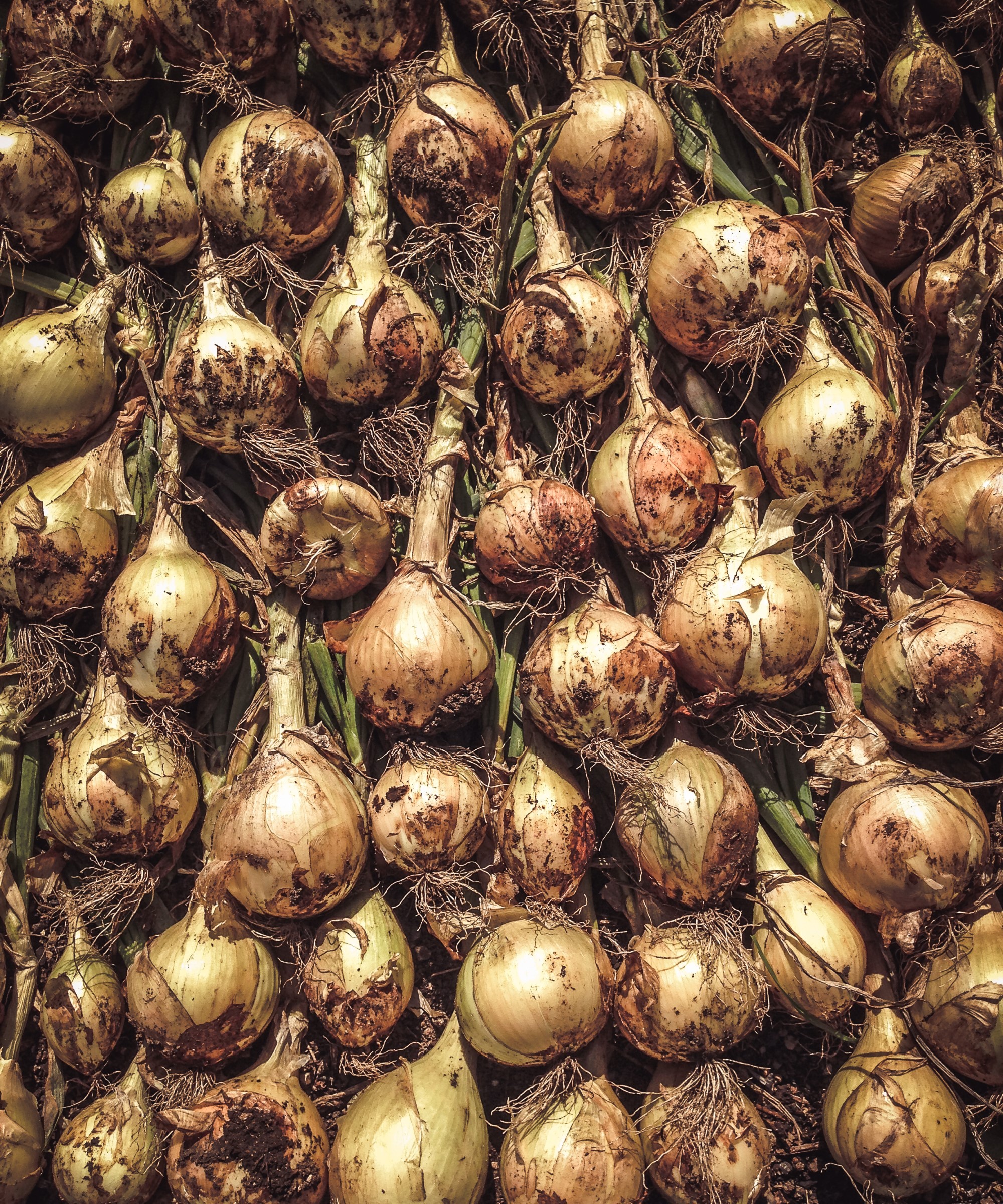
Onions are a tasty crop, but there are several easy mistakes you can make when growing them at home

Drew is a former professional gardener who also specialized as a grower of vegetables, fruit, and herbs. He worked in several walled gardens and grew edibles for chefs, and to sell to the public. Onions were a mainstay crop in the kitchen gardens and he has grown and harvested a wide variety of onions over the years.
8 common onion growing problems
There are lots of varieties of onions, including different colors and shapes not commonly seen in stores. A versatile and staple crop, onions are common sights in both vegetable gardens and kitchens. Though it can be a simple crop to grow, there are some regularly seen problems that could hit your onions. We take a look at some of the most common problems, what causes them, and what can be done to combat the issues.
1. Growing the wrong type of onions
There are many different types of onions that you can grow, categorized as short day, intermediate, and long day onions. They are differentiated by the level of daylight hours the variety needs to start forming bulbs. It can cause problems for growers as some types are more suited to growing in certain USDA zones and can under-perform if given the wrong climate in which to grow.
Bruce L Frasier, President of Dixondale Farms in Carrizo Springs, Texas, claims that choosing the wrong variety for your area is the ‘foremost’ issue when it comes to many people’s onion growing problems.
He explains: ‘Onions are characterized by day length requirements. Short day onions begin the bulbing process when daylength reaches 10-12 hours, intermediate days 12-14 hours, and long days require 14-16 hours.
‘Planting a short day in the north will not generate enough leaves before the bulbing will begin, and therefore will produce golf ball size onions as best. Planting a long day variety in the south will just produce large green onions that will never bulb out.’
When choosing what onions to grow, make sure to pick varieties that are best suited to your regions. Research your USDA zone and see what different cultivars will thrive in your conditions, or visit local farmers markets to see which varieties growers local to you are succeeding with.
- Buy onion seeds and sets to grow at Burpee
- Buy onion sets to grow at Nature Hills
- Buy onion sets to grow at Walmart
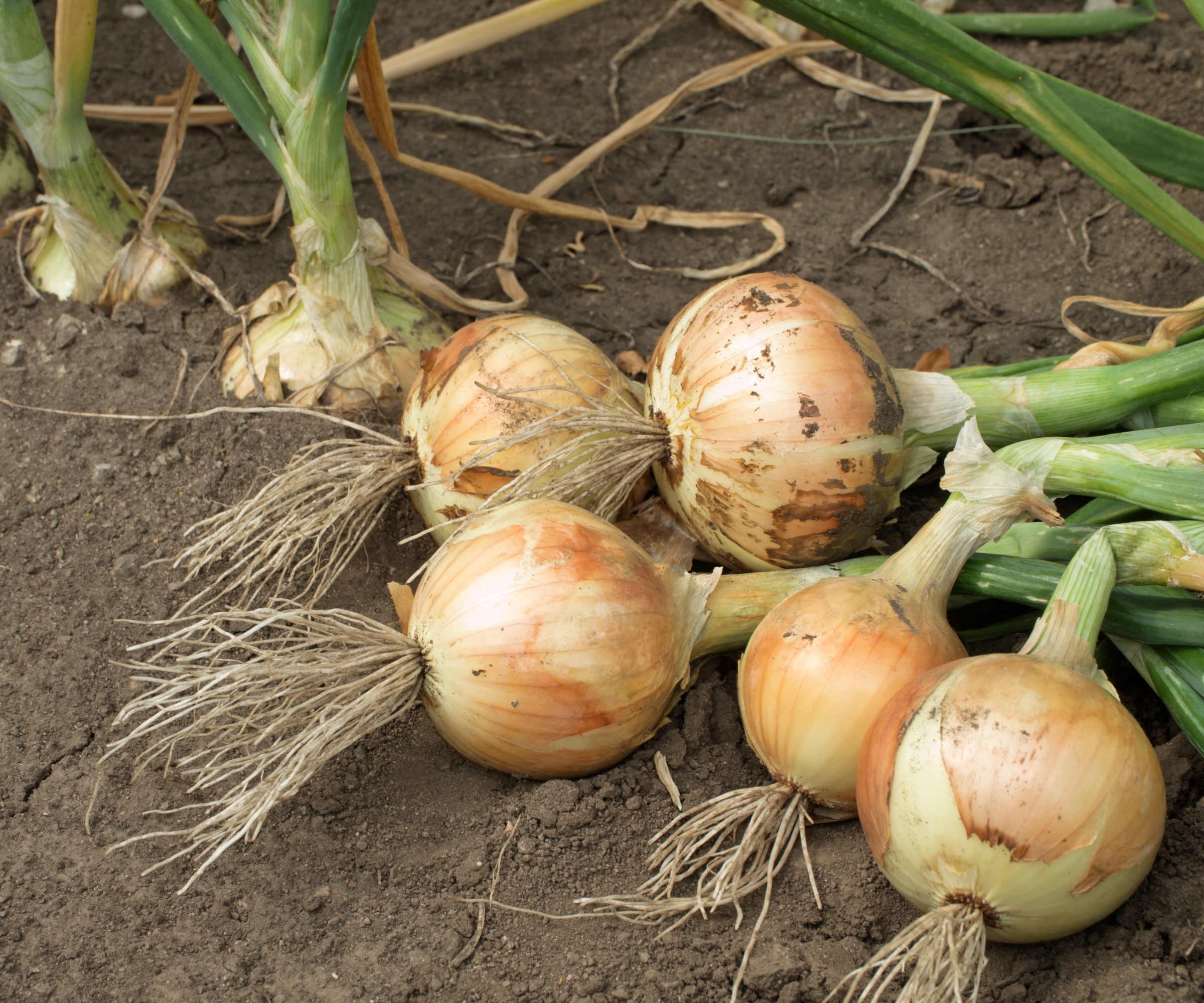
Onions come in short day, intermediate, and long day types
2. Not feeding crops sufficiently
If you want to grow bigger onions, then fertilizing onions is a very important task that needs to be completed as part of the maintenance regime. It is important to add fertilizer when you are planting your onions and also to regularly feed throughout the growing season. Plant fertilizers contain three vital nutrients for plant health in nitrogen (N), phosphorus (P), and potassium (K) and any packaging will show the plant fertilizer numbers that show its make-up of NPK.
Onions need a balanced fertilizer at the time of planting and this helps them to establish a healthy root system, followed by a high-nitrogen feed around a month later and repeated every three weeks. Onions can be grown either from onion sets or seeds and hardier varieties of sets can be planted in fall. Any onion sets planted in fall should be given a dose of high-nitrogen fertilizer in spring. A good example is the Hi-yield Ammonium Sulfate fertilizer from Walmart or Calcium Nitrate from Amazon.
Dominique Kline, Farm Manager at The Hope Farm, explains that onions have high feed requirements and a close eye should be kept on the crop to identify when to stop feeding your bulbs.
‘Onions are surprisingly heavy feeders, acting more like a leaf crop than a root crop and relying on high nitrogen for ample foliage growth to support later bulb growth,’ says Dominique. ‘We recommend a 5-10-5 ratio for your fertilizer. Adhere to a regular fertilization schedule until you begin to see the bulbs gaining mass and soil cracking around the base, a sign that no further fertilization is needed.’
Digging in lots of well-rotted manure or homemade compost prior to planting the crop will also provide it with lots of important nutrients. Mulching around the crop will also add nutrients as the material rots down. You will still get an onion crop even if you do not feed your plants, however, it will be smaller than a well-fed crop and if you are wondering ‘why did my onions not grow big?’ then the answer could be down to a lack of fertilizer.
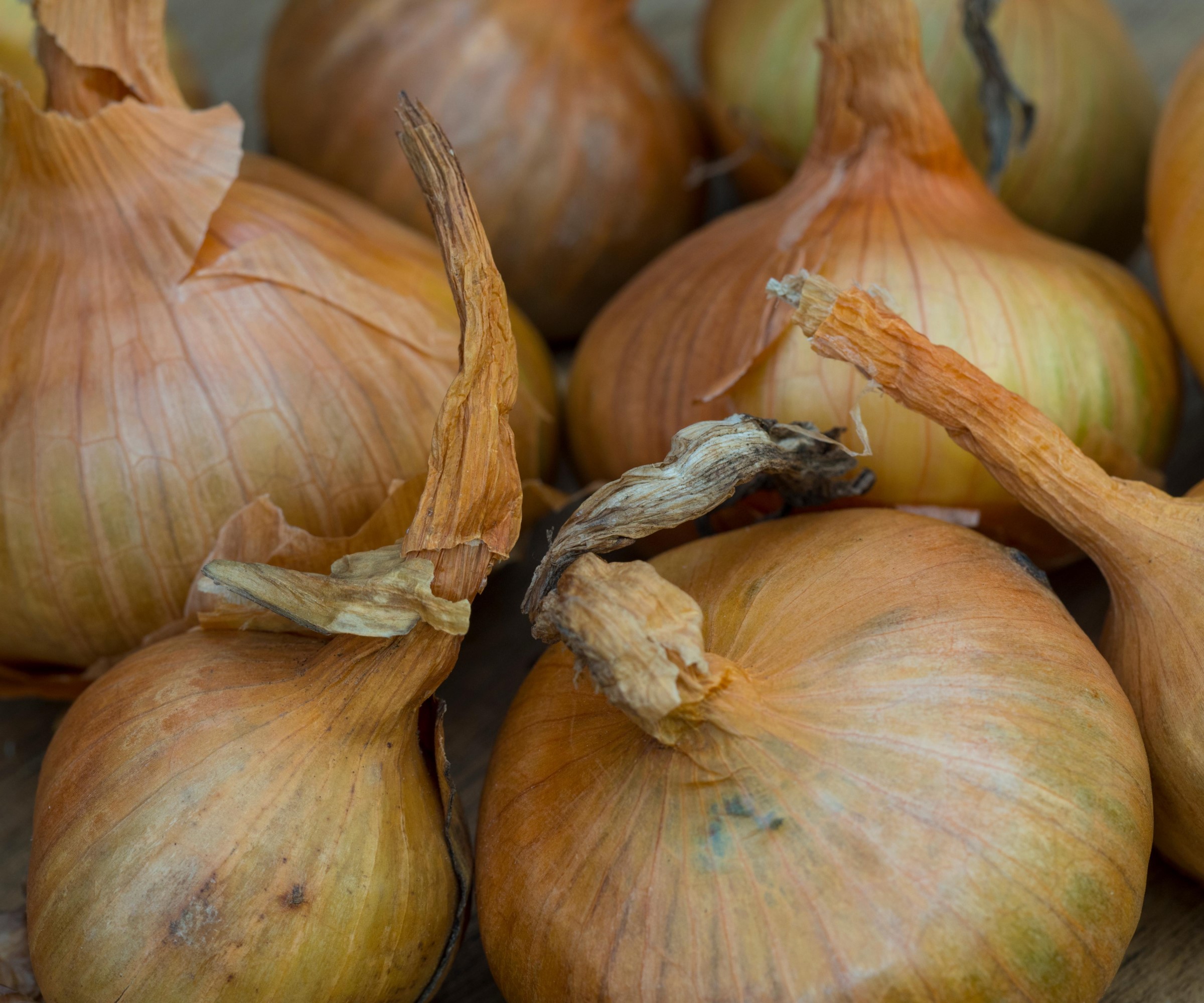
Onions are a hungry crop that need feeding for the biggest bulbs
3. Overwatering
Onions do require water in order to grow and swell the bulb, but only really need lots of watering in periods of warm weather and drought. Increasing the watering due to heatwaves can successfully combat bolting, but in most circumstances too much water can cause onion growing problems. Excessive watering can make the crop susceptible to fungal or bacterial diseases and it does not take lots of over-watering for onions to rot in the ground.
Julia Omelchenko, resident botany expert for the NatureID app, advises: ‘Plant it in soil that is moist but not soggy. Water the onion frequently until the bulbs establish. Then you’ll need to scale back on watering. Make sure to increase watering when it’s hot and dry and reduce it when it gets colder.'
It is recommended that onions get around an inch of water per square foot per week, with adjustments made for rainfall or drought. Check with your fingers to see how much moisture there is in the soil an inch down. Many growers use drip irrigation to focus the water down to the roots rather than spraying the leaves. If you are growing onions in containers then it is vital to monitor the moisture levels in the pot every couple of days as soil in containers can dry out very quickly on hot days.
Any watering of the crop should stop in mid-summer once the bulbs have swollen, around four weeks before the time to harvest onions and when their leaves have turned yellow. Continuing to water after this point will impair the bulb’s storage life.
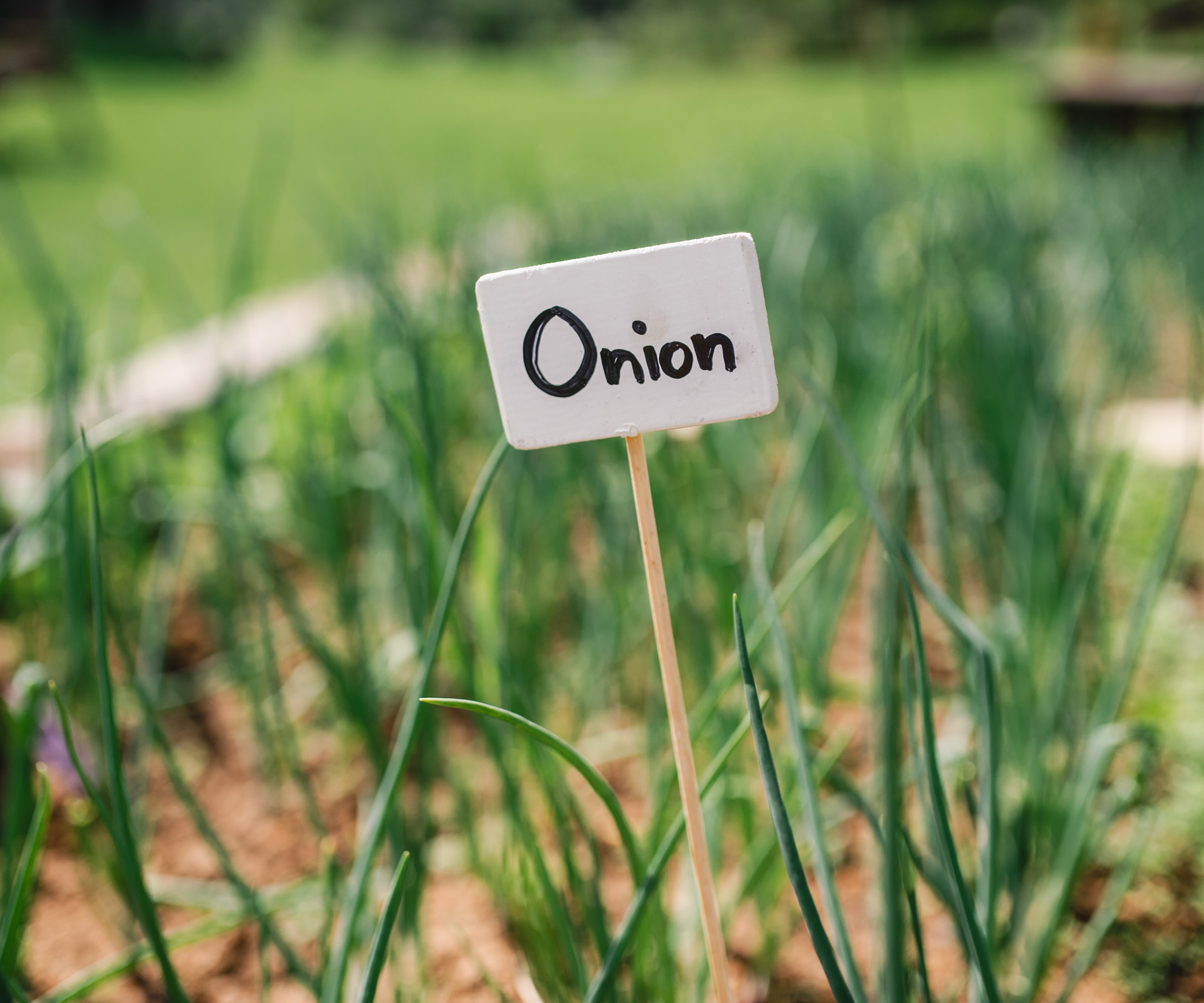
Giving onion crops the right amount of water is key
4. Bolting
Onions regularly bolt and it is caused by the plant feeling stressed. Its reaction to this stress is to put out a long stem as it seeks to flower and set seed. Bolting can be caused by hot and dry weather, coupled with a lack of water, and also by unexpected periods of cold. The issue for the grower is that a bolting onion puts all its effort into flowering so it stops bulbing – leaving you with small bulbs.
Luckily, it is not all bad news if your onions start to bolt and you can still get a harvest from the crop, however, if you are planning on storing onions, be aware that onions that have bolted will not store well.
Jen McDonald, a certified organic gardener and co-founder of Garden Girls, advises: ‘Cut the flower off and you can either leave the onion in the ground for a few weeks longer or you can harvest it. You can also choose to save the seeds to plant the following year.’ A bolted onion is edible and can last for up to a month in the ground, though it is advisable to use them right away.
To prevent bolting, you can buy bolt-resistant varieties and onions grown from seed tend to bolt less often than sets. Dominique Kline advises that ‘prevention’ is the best way to combat bolting and reduce any stress for your crop, such as water regularly during hot weather. She recommends: ‘Keep an eye on the forecast for your area – during cold snaps, cover your crops to minimize their shock, and during heat waves, spray your plants with cool water to mitigate the fluctuation.'

Bolting is common in periods of hot and dry weather
5. Planting too deep
Planting onions too deep can affect the development of bulbs and can even result in the plants not forming bulbs at all. If you are learning how and when to plant onions, then a rule of thumb is that onion sets need to be planted two inches deep, with only a little soil covering the tip of the bulb – remember that the tip must always be facing upwards when planting onions.
If you have grown your onions from seed and need to know when to transplant onion seedlings, the signs are when they get to 6-8 inches and have three leaves. Seedlings should be transplanted 1-1.5 inches deep.
Planting onions too deep can result in issues with bulb formation and can lead to bulbs that are small and oval-shaped rather than round. Also it means that you cannot see when the bulbing starts and, the deeper they are planted, the more they risk sitting in cold and wet ground during periods of wet weather. This can lead to the onion set rotting underground and never sprouting.
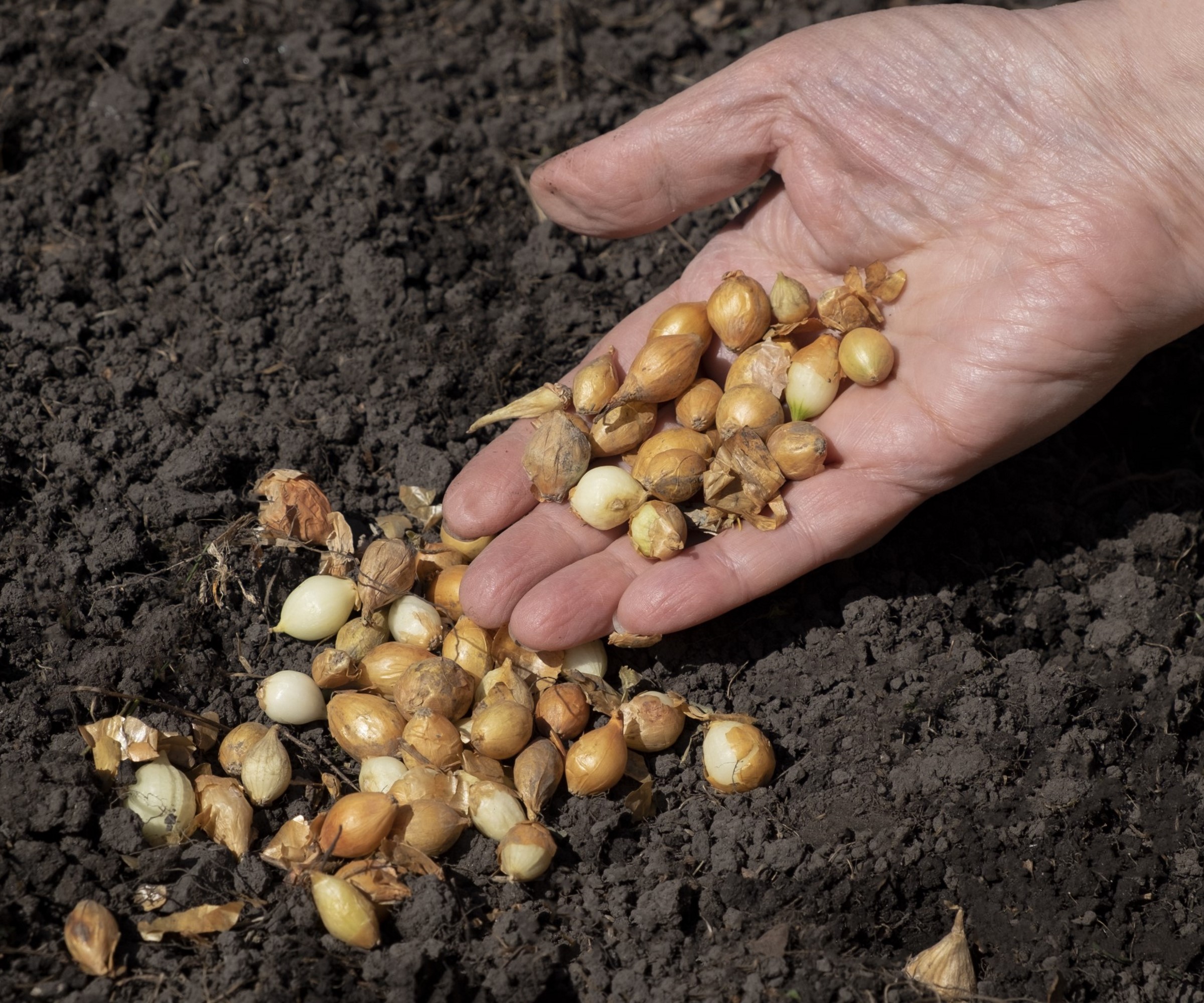
Onions can either be grown from sets or seed
6. Planting too close
As well as planting too deep, onions will have growing problems if they are planted too close together. If you fear you have planted your crop too close together, then thin out the plants to reduce the crowding. This will reduce competition for sun, water, and nutrients and give the bulbs room to grow to their full size.
Dominique Kline advises that six inches between plants and 12 inches between rows should give ‘plenty of breathing room for your bulbs to thrive’. She warns: ‘When overcrowded, plants compete for nutrients and will not have as successful of a harvest. Onions also rely especially on sun exposure, so ensure that your crops do not interfere with one another’s access to daylight.’
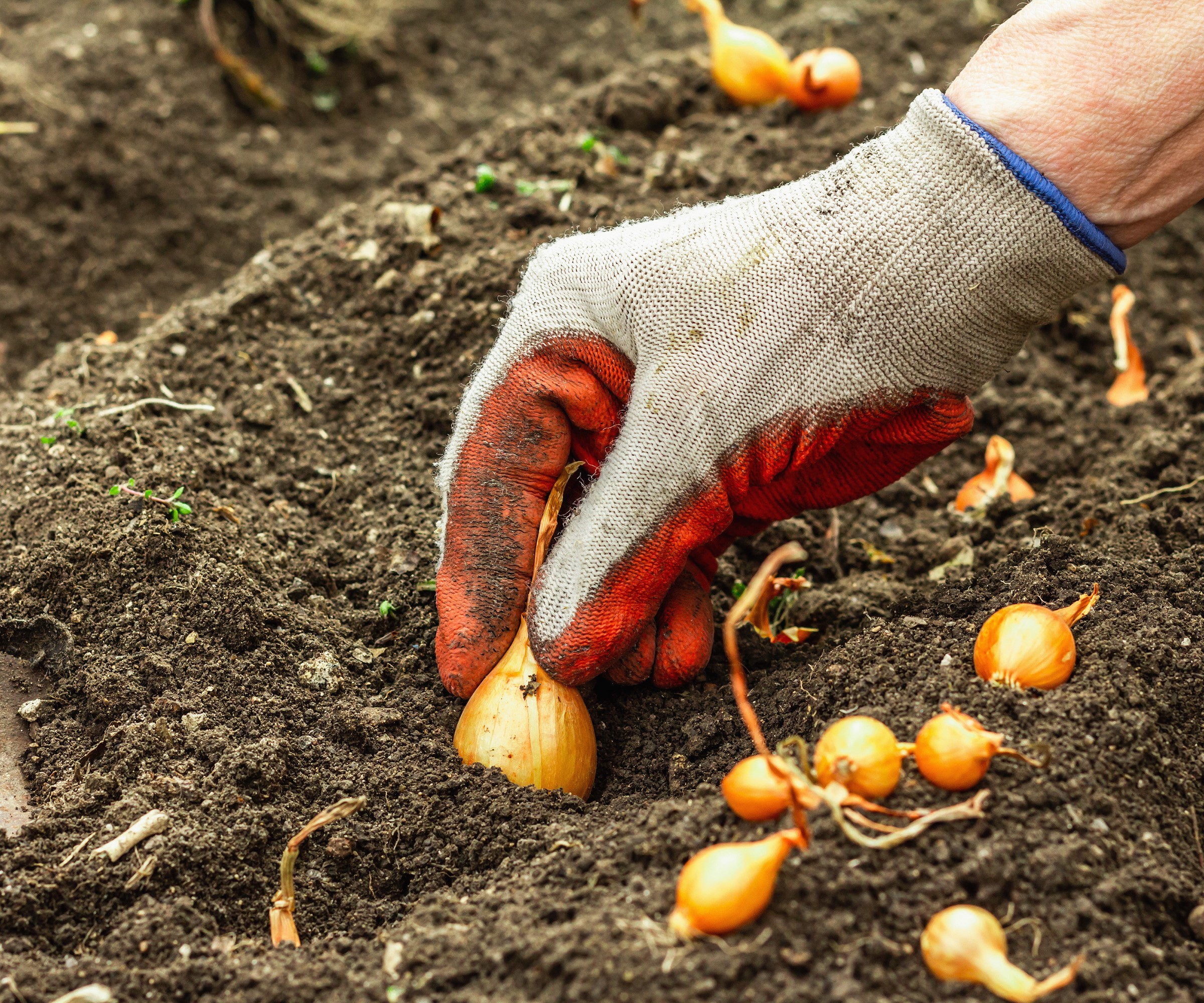
Onions sets are simple to push into the soil – always plant them pointy end up
7. Onion white rot
Onion white rot is a fungal disease that affects all alliums, so can wreak havoc on the likes of garlic, leeks, and shallots, as well as onions. Unfortunately, it is a very common problem with onion growers and not treatable – so any affected onion needs to be pulled and discarded.
Julia Omelchenko from NatureID explains that onion white rot is caused by a fungus called Stromatinia cepivorum and crops can be infected both in the ground and when stored.
‘Onion white rot causes yellow and dry foliage and watery spots at the stem base. You can also find fluffy white mycelium on the damaged parts as well as on the roots and the bulb skin,’ says Julia.
‘To prevent the disease, choose healthy seeds and seedlings. You also need to rotate crops – don’t plant the onion in the same area more than two years in a row.’
Crop rotation is vital in the fight against white rot as the fungal infection can remain in the soil for many years. Ensure not to plant allium crops in the same location for more than one year in a row.
Jen McDonald adds that overwatering can be a factor in the disease, as excess watering of crops creates favorable conditions for fungal diseases. She advises: ‘Preventing rot while the onion is growing can be done by carefully managing the irrigation schedule. If leaves begin to yellow, this is a sign of overwatering.’
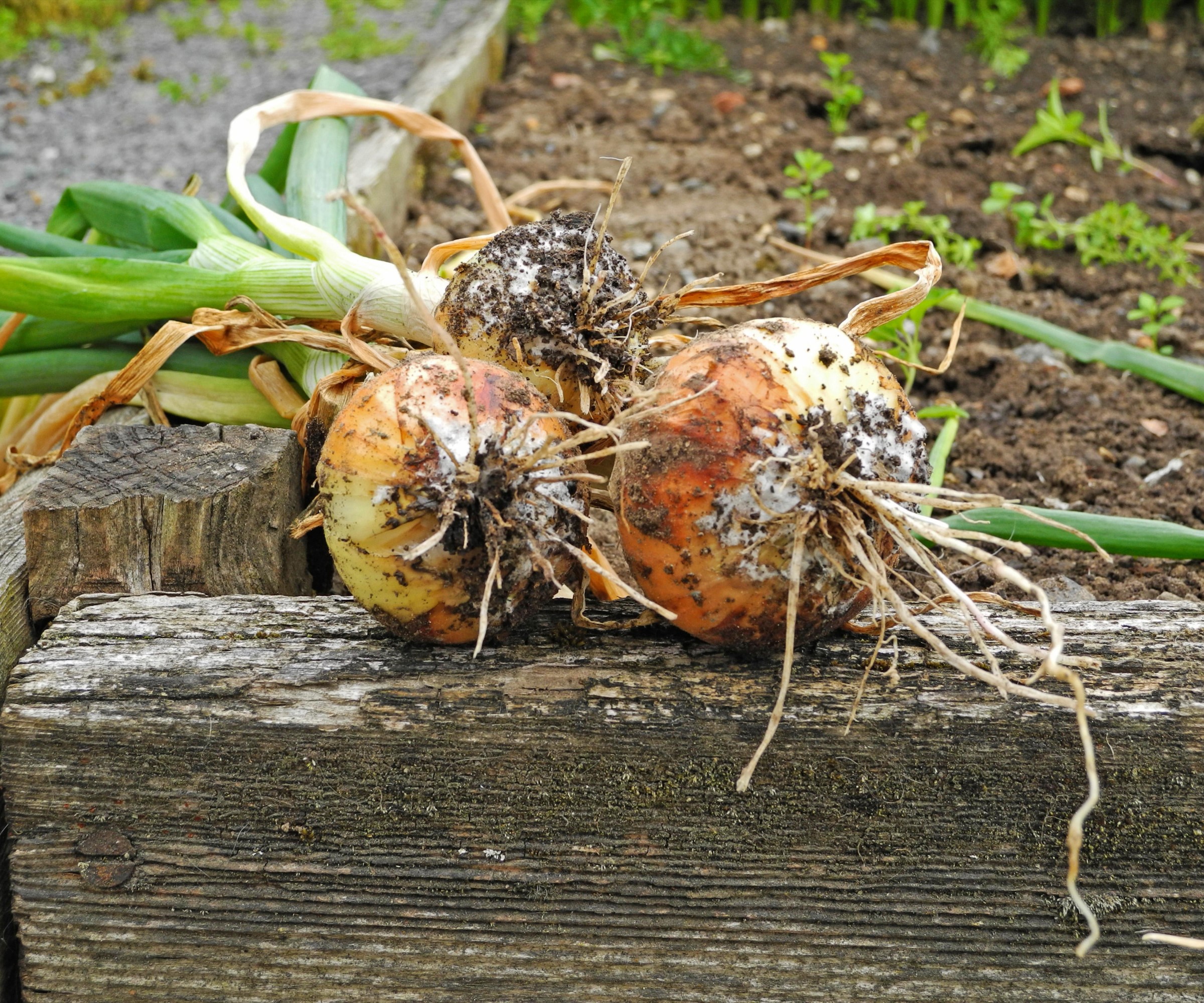
The fungus that causes white rot can live in the soil for many years
8. Bulbs showing too early
Sometimes the bulbs will show too early and before you have planned when and how to harvest onions in your growing calendar for the year. The onion bulbs can start to pop out of the ground earlier than you wanted, which can lead to you worrying about them making it through to harvest time.
Jen McDonald of Garden Girls reassures that early bulbs are ‘not a bad thing’ and it is not the worst of the onion growing problems, adding: ‘It’s proof that the onion is maturing. Leave it as is. Covering it with soil will only increase the chance of rotting.’ As Jen recommends, do not cover the bulb back up with soil as this can likely lead to the neck rotting.

Onions come in yellow, white, or red varieties
There may be issues that can hit when growing onions, however do not let that put you off. Onions overall are a relatively simple crop to grow and there is a real range of colors, shapes, and flavors to choose from – more than you can ever find in a grocery store. I have always enjoyed growing onions in the kitchen gardens I worked in and found them one of the more satisfying vegetables to grow. Problems may arise but many of them are easily avoidable and, even if they do hit, it doesn’t always mean game over for your crop.
Sign up to the Homes & Gardens newsletter
Design expertise in your inbox – from inspiring decorating ideas and beautiful celebrity homes to practical gardening advice and shopping round-ups.

Drew’s passion for gardening started with growing vegetables and salad in raised beds in a small urban terrace garden. He has worked as a professional gardener in historic gardens and specialises in growing vegetables, fruit, herbs, and cut flowers as a kitchen gardener. That passion for growing extends to being an allotmenteer, garden blogger, and producing how-to gardening guides for websites. Drew was shortlisted for the New Talent of the Year award at the 2023 Garden Media Guild Awards.
-
 I'm 5ft2 and this telescopic scrubber safely and easily banished mold and grime in even the hardest-to-reach areas of my bathroom in less than 15 minutes
I'm 5ft2 and this telescopic scrubber safely and easily banished mold and grime in even the hardest-to-reach areas of my bathroom in less than 15 minutesMy bathroom has never looked better thanks to this handy $16 two-in-one tool from Joseph Joseph
By Ottilie Blackhall Published
-
 Everyone is obsessed with vintage tiles right now – bring the nostalgic charm of this classic design feature into your home with our 5 design ideas
Everyone is obsessed with vintage tiles right now – bring the nostalgic charm of this classic design feature into your home with our 5 design ideasHonor the past with our favorite ways to decorate with vintage tiles, as suggested by interior design experts
By Eleanor Richardson Published